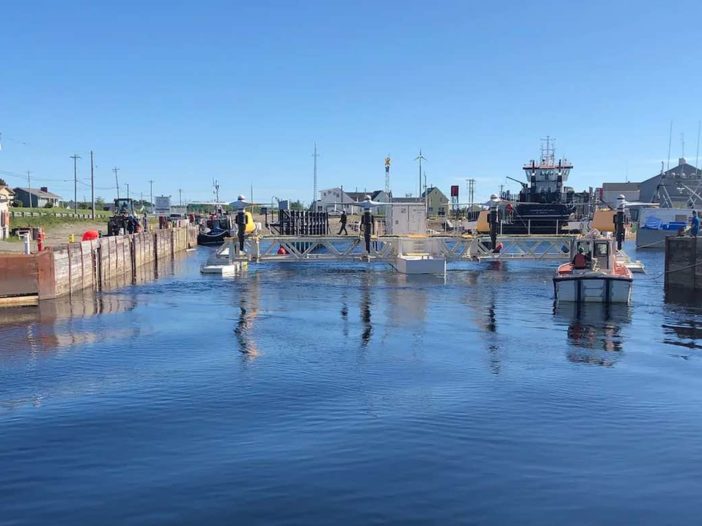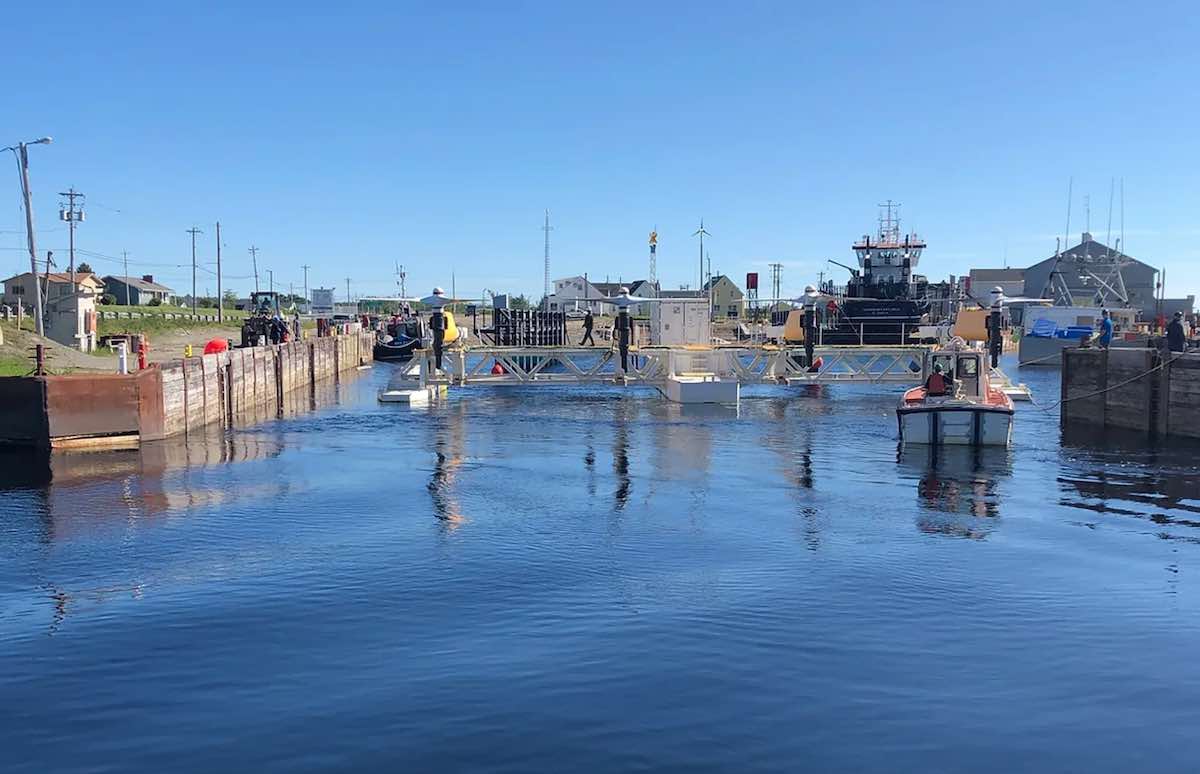
About 250 coastal and island communities in Canada now use diesel for their main power source, but the global marine design firm BMT hopes to get them off diesel with a project using microgrids powered by tidal energy and other renewable resources.
In the US, there’s also an effort to wean remote communities off diesel. For example, Alaska is looking to renewables and microgrids to create wealth, cut energy costs, boost resilience and transition away from fossil fuels.
In Canada, the estimated tidal power potential is 35,700 MW. For example, the Minas Passage area of the Bay of Fundy is seen as having high levels of tidal energy potential. That area is home to an estimated 7,000 MW of tidal energy potential, about equal to the power needs of 2 million homes – or all of Atlantic Canada.
In the US, the annual energy potential of waves off the coasts is as high as 2.64 trillion kWh, or the equivalent of about 64% of total US utility-scale electricity generation in 2021, according to the US Energy Information Administration.
You can count on the tides
Tidal energy is a predictable resource – based on the movement of tides – that can be integrated into microgrids with other renewable resources, often complementing them, said Martin Moody, electrical manager at BMT.
The company recently completed a test of its Smart Grid Microgrid Controller that integrates tidal and other energy resources. The controller decides which resources to use and in what order, depending on the availability of renewable power sources. BMT aims to deploy the technology – including tidal power resources – in remote island and coastal communities.
Testing was done with solar photovoltaics (PV), tidal energy, battery energy storage, diesel and a load bank at Sustainable Marine Energy’s Grand Passage site in Nova Scotia, Canada. Sustainable Marine provides tidal energy products for island and coastal communities.
The controller maximizes the use of tidal energy, PV and energy storage, and when the battery drops to a low level of charge, the diesel kicks in.
“We were testing the controller for use in places where there is no grid and diesel is used. We want to go into these remote communities and quickly remove diesel,” said Moody.
One of the goals of the project is to create a standardized product that combines renewable resources such as tidal energy, storage, PV and biomass, plus diesel. That standardized solution would produce between 0.5 MW and 1 MW of power and could be off grid or connected to the grid, Moody said.
In BMT’s $900,000 demonstration, launched in December 2020, tidal energy was produced by Sustainable Marine’s floating platform, which has six turbines, each rated at 70 kW. The platform pivots on a turret and works in-stream with the natural flow of the tides and can be lifted out of the water when it encounters dangerous objects.
Water is a better medium than air
The device harnesses tidal energy the same way wind turbines harness wind energy – except that water is about 800 times denser than air, said Nabil Al-Kahli, senior project engineer for Sustainable Marine. This means that tidal turbines don’t have to spin as fast as windmills to generate power.
“We believe the results will provide further evidence demonstrating the real value of tidal energy as a clean and predictable renewable energy source, which offers a complementary power profile to more established renewables such as wind and solar, ultimately bringing greater stability to the future green energy mix,” said Sustainable Marine CEO Jason Hayman.
The Sustainable Marine turbines transmit energy from their platform at higher voltage levels than what’s needed for a 480-volt grid, said Derek Neufeld, a director at Turtle Island Innovations, a partner in the microgrid project that provides alternative energy integration design.
To address the voltage issue, the project used transformers to help bring down the voltage levels, he said. The project aims to meet the needs of 10 to 100 homes and stabilize the energy that goes to the homes. The microgrid is the first in North America to include tidal power, solar, storage and diesel, he added.
One of the challenges of deploying in remote communities is being sensitive to the needs of First Nation communities, said BMT’s Moody.
To meet the needs of First Nation communities in Canada, indigenous community members, developers and utilities often work together to make the most of the potential of microgrids to combat climate change and reduce diesel use, with indigenous communities often owning a share in projects. In these remote communities, diesel generators can be noisy and high in carbon emissions. And if the fuel has to be flown in, costs can rise.
Adding tidal energy to the resource mix in a microgrid intended to serve such communities proved to be an educational endeavor, said Turtle Island Innovation’s Neufeld.
“It was really cool working with Sustainable Marine and experiencing the periodic nature of tides and how it impacted electric generation,” he said. “Integrating several periodic energy sources – tidal power and solar – was interesting.”
This article was originally published by Microgrid Knowledge. Republished here with permission. Read the original article here.



